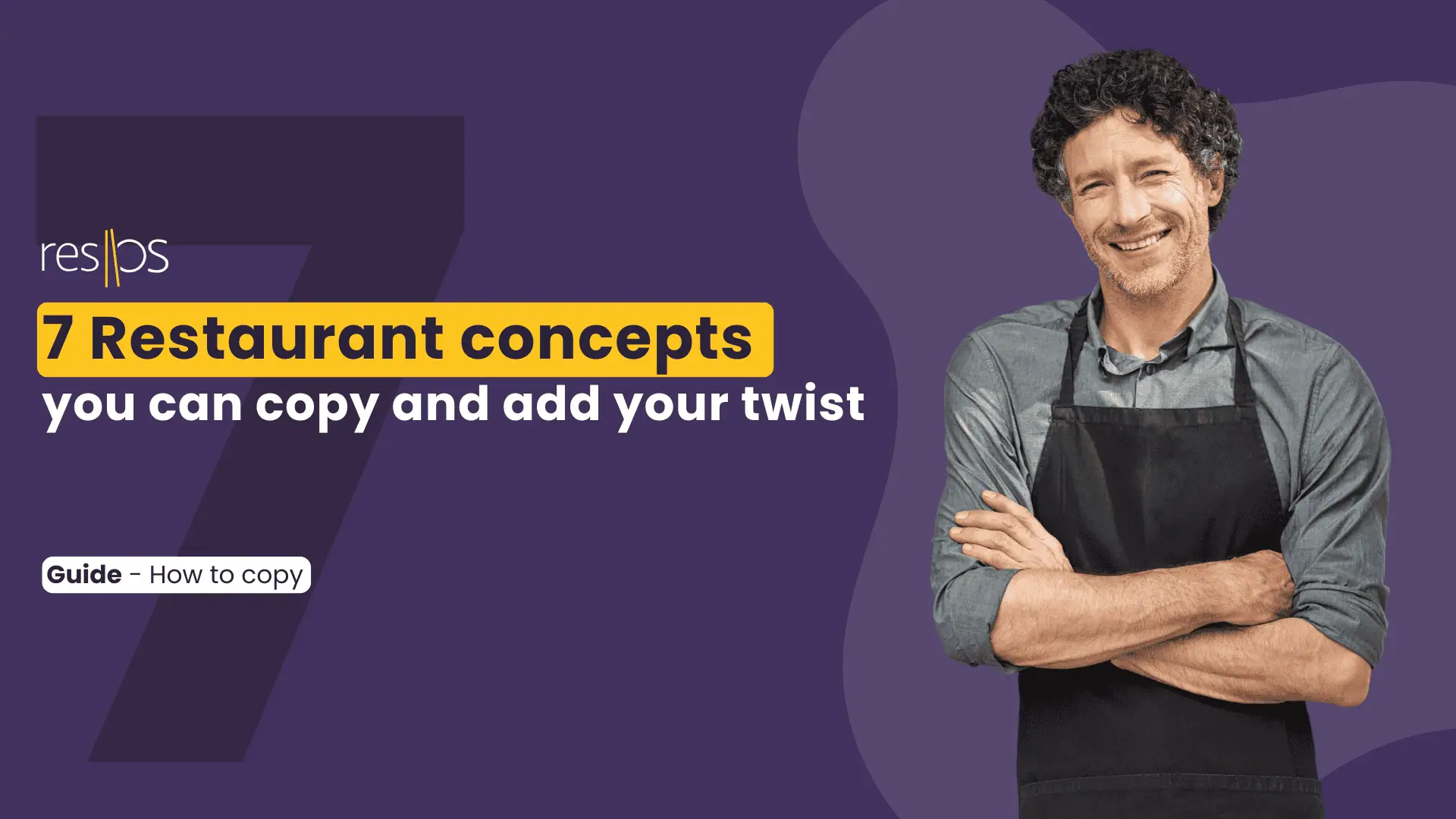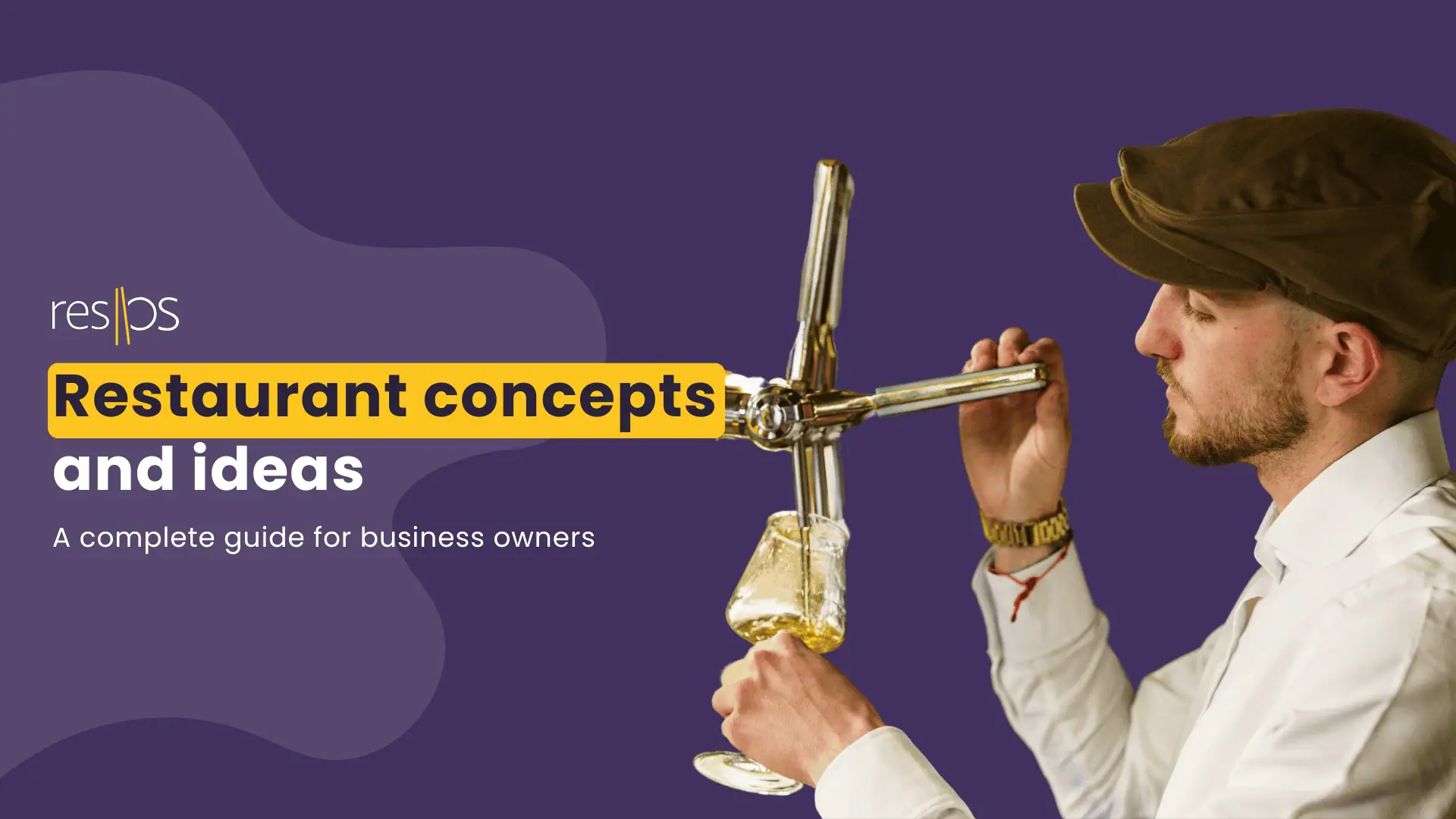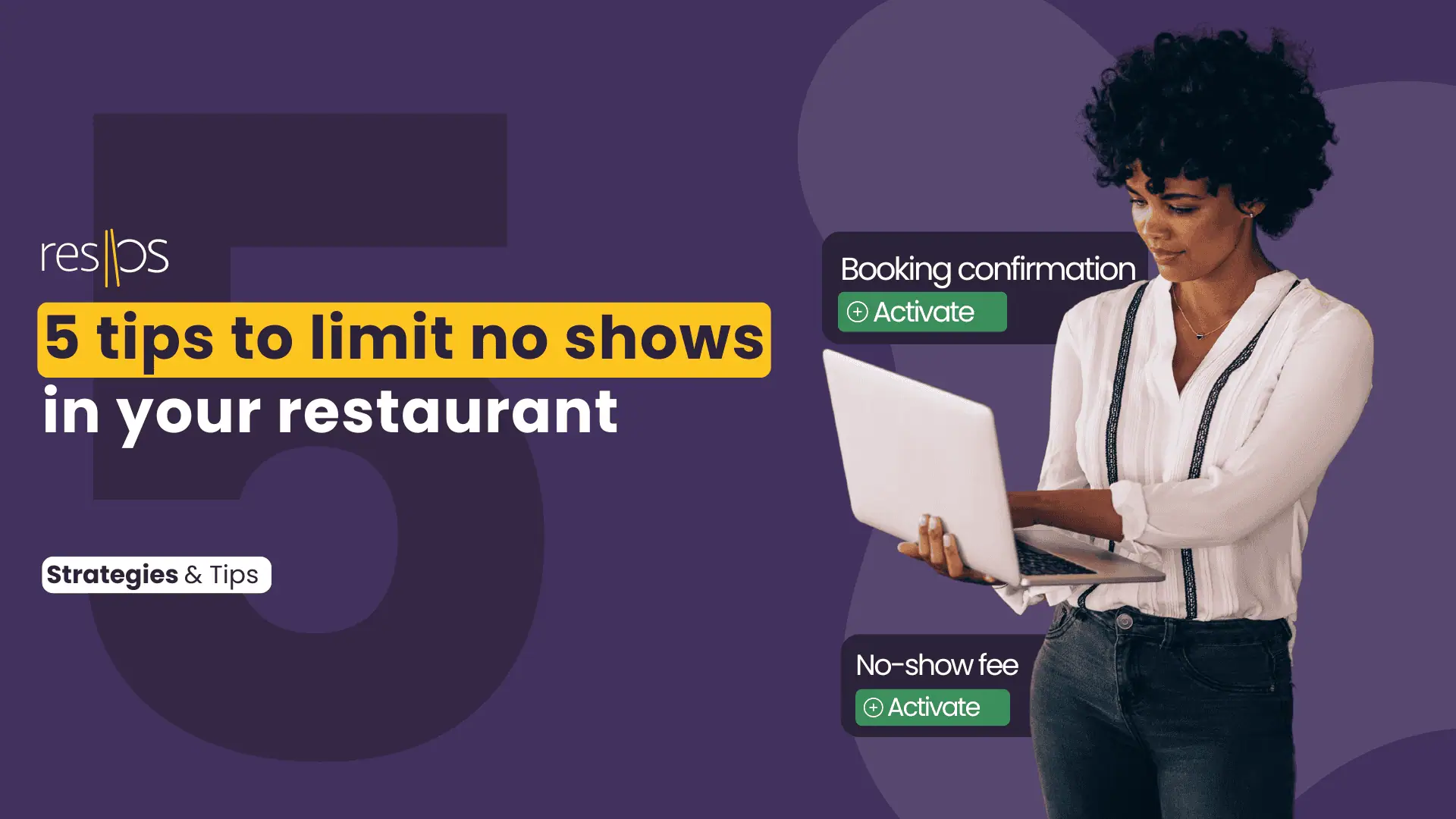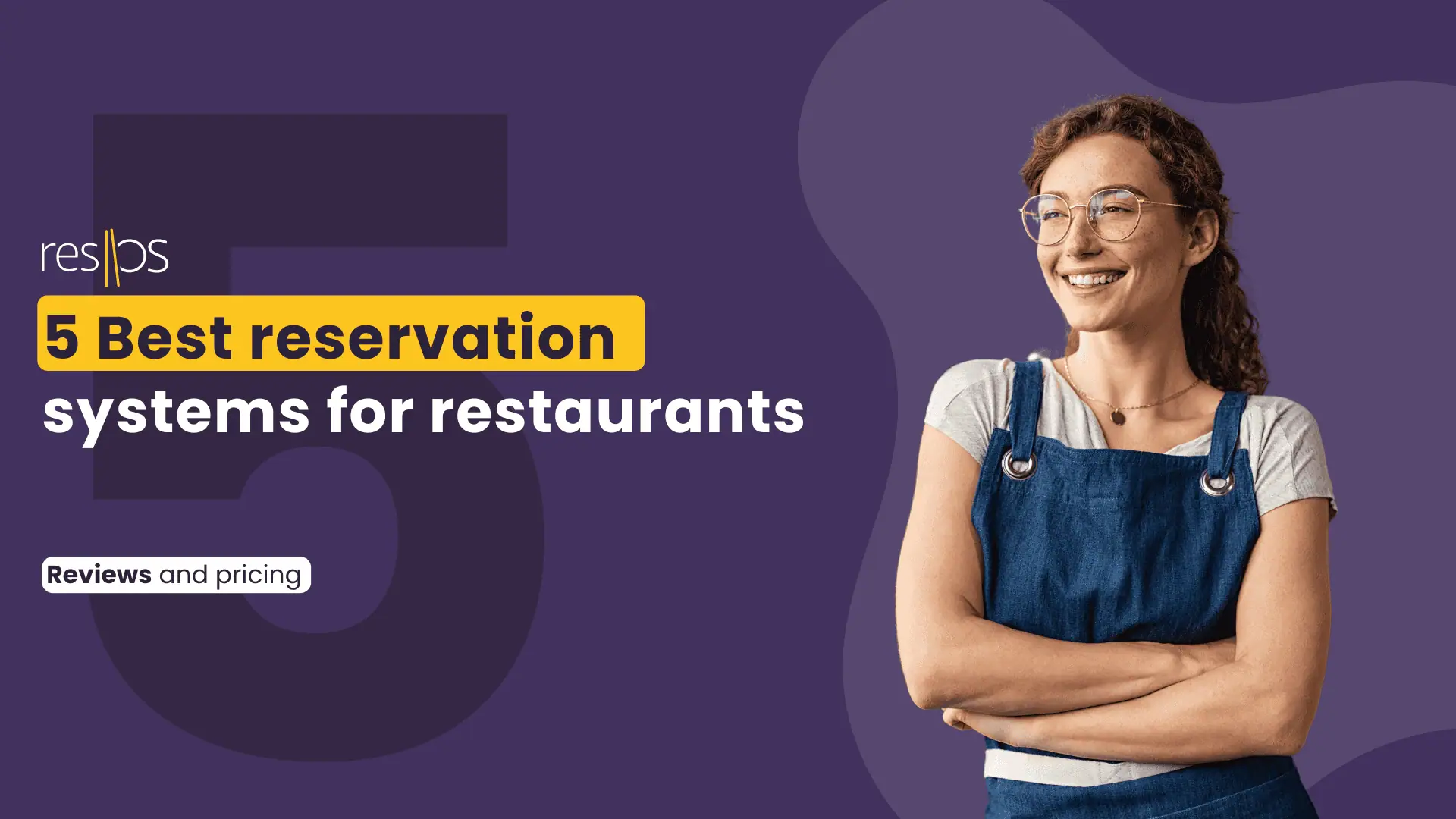If you’re looking to start a restaurant but not sure where to begin, copying a successful restaurant concepts can be a smart way to get started. Many restaurant owners have taken existing ideas, given them a twist, and built thriving businesses.
Let’s explore some restaurant concepts that you can easily replicate and customise for your own business.
1. The fusion concept 🌮🍜
What it is: A fusion restaurant blends two or more types of cuisine to create something fresh and exciting. Think sushi burritos, Korean BBQ tacos, or Italian-Indian pizzas.
Why it works: People love trying new things, and fusion cuisine offers a way to experience multiple food cultures at once. Plus, you can easily experiment with different combinations to make your menu unique.
Features to consider: Fusion places get a lot of attention because people are curious about the mix of flavours. Having a system where customers can book ahead or join a waitlist helps manage those busy periods when everyone wants to try your unique combos.
How to copy: Look at two cuisines that complement each other, and try blending their signature dishes.
For instance, a British-Chinese fusion could offer things like fish and chips with a Chinese twist.
2. Fast casual with a twist 🍔
What it is: Fast casual dining offers a quick, affordable, yet higher-quality dining experience compared to fast food. This concept is flexible and can be applied to almost any cuisine.
Why it works: Customers get the convenience of fast food but with fresher, healthier options and a more comfortable dining atmosphere.
Features to consider: Fast casual spots usually don’t need full-on reservations, but offering a few book-ahead options for busy times can help. And if you let people order ahead, they can jump in quickly, making it a win-win for both you and your customers.
How to copy: Pick a classic fast food menu item (like burgers, pizza, or sandwiches) and make it better by using higher-quality ingredients, or adding a signature twist.
For example, you could create a fast-casual restaurant focusing on gourmet toastie (grilled cheese sandwiches) with premium fillings like truffle mushrooms or artisanal cheeses.
3. The café hybrid ☕+🍷
What it is: A café by day, and a wine bar or small-plates restaurant by night. This allows you to maximise revenue by appealing to different crowds at different times of the day.
Why it works: You can appeal to coffee lovers during the morning and afternoon, and then switch to a more sophisticated, wine-sipping crowd in the evenings.
Features to consider: A day-and-night café can have two types of crowds, from morning coffee lovers to the evening wine sippers. A booking system that switches from café hours to dinner hours can make it easy for each group to grab a spot when they need it.
How to copy: Start as a cosy café, but offer wine or cocktails after 5 PM, paired with a small bites menu. This gives you a unique day-to-night concept that can easily attract two different types of customers.
4. The community hub 🏘️
What it is: A restaurant concept that revolves around building community. This could be a space where local artists showcase their work, a venue for open mic nights, or a spot where people can gather for workshops or social events.
Why it works: Customers aren’t just looking for food; they want to feel connected. A community hub restaurant creates a loyal customer base because people come for more than just a meal—they come for the experience and sense of belonging.
Features to consider: If your place also serves as a community hangout, then flexible bookings are key. Let people book for special event nights or even reserve space for local gatherings. It’s a great way to build loyalty and keep your place buzzing with events.
How to copy: Dedicate a portion of your restaurant to community events, whether it’s art exhibitions, live music, or local business pop-ups. You could also offer space for community groups to hold meetings or events, making your restaurant a neighbourhood favourite.
5. Food Halls 🍕🍣🥗
What it is: A food hall brings multiple small eateries or food vendors together under one roof. Customers can sample a variety of cuisines in one location, creating a diverse and dynamic dining experience.
Why it works: Variety is the spice of life! Food halls allow customers to enjoy different cuisines without having to make multiple stops. Plus, it caters to groups with different tastes, ensuring that everyone finds something they like.
Features to consider: With lots of choices and usually lots of people, food halls can benefit from a simple online system where people can book entry times or seating. It keeps the flow smooth and helps customers avoid long waits when they’re hungry to try different stalls.
Mercato Metropolitano in London offers a huge variety of global street food vendors, from fresh pasta to sushi, all in one space.
How to copy: Start small by partnering with other local food vendors or chefs to create a mini food hall. Offer customers the chance to explore different flavours in one place, which can increase foot traffic and variety.
6. The green restaurant 🌱
What it is: This concept focuses on sustainability and eco-friendly practices. From sourcing organic and local ingredients to minimising waste and using biodegradable packaging, everything is geared toward being environmentally responsible.
Why it works: With increasing awareness about climate change and sustainability, customers appreciate restaurants that make an effort to be eco-friendly.
Features to consider: Eco-conscious diners are often organized, so they’ll appreciate an easy way to book ahead. You could even add options in your booking system to let customers note dietary preferences, so they know they’ll get just what they’re looking for.
Farmacy in London serves plant-based dishes using ingredients sourced from their own biodynamic farm.
How to copy: Adopt sustainable practices such as farm-to-table sourcing, offering vegan/vegetarian dishes, reducing single-use plastics, and installing energy-efficient lighting. Market your green efforts to eco-conscious customers who care about their environmental footprint.
7. The digital nomad café 💻☕️
What it is: A Digital Nomad Café caters to remote workers and freelancers by blending a cosy café atmosphere with the functionality of a co-working space. It offers high-speed Wi-Fi, plenty of charging stations, comfortable seating, and even meeting rooms for video calls.
Why it works: With more people working remotely, there’s a growing demand for flexible workspaces that also serve great food and coffee. A digital nomad café offers a productive environment where people can work, relax, and eat—all in one spot.
Features to consider: For those working remotely, a digital nomad café is all about convenience. Make it easy for people to book a workspace, whether that’s a quiet table or even a small meeting room, so they can settle in for the day with good coffee and Wi-Fi.
Second Home in Lisbon combines co-working spaces with a café, offering a creative vibe and tasty meals, attracting digital nomads from around the world.
How to copy: Equip your café with fast Wi-Fi, plenty of outlets, and comfortable seating. Consider offering a co-working membership and healthy menu options, so customers can stay and work for longer.
When you’re thinking about a new restaurant concept, getting your reservations right is just as important as nailing the vibe and food. Good booking systems help make sure people get seats, reduce waiting, and make the whole experience smooth.
With resOS, you have the flexibility to start with our freemium version, offering basic features to get you going. Plus, you can try our full restaurant booking system for free to see how it can make managing reservations easier and more efficient for your business.



